For the backcountry snowboarder the splitboard is a piece of equipment that offers an easy and efficient way to climb snow covered slopes without the hassle of carrying snowshoes. The problem with splitboards is that they are expensive. Thankfully there are kits on the market that give you the ability to make your own snowboard into a splitboard, and not blow the bank doing it. Taking on the task of building a splitboard requires some basic power tools and some patience.
I used Voile’s DIY Splitboard Kit to build my splitboard. The kit comes with touring brackets, heel risers, slider plates to attach your existing bindings to and all of the hardware that you will need to join the two halves of the board back together after it has been cut.
Before cutting your board in half there are a few things you should make sure of. Make sure that the board has a full wood core. Foam core boards are not strong enough for mounting the split kit hardware, and touring brackets. It is also good to choose a board that is slightly on the stiffer side as cutting a snowboard in half and putting it back together again results in a slightly softer board that you started with. Lastly, boards that have threaded binding inserts on the center-line of the board can be more challenging to cut, so do take this into consideration if you have a choice in boards.
Splitting the board
The first step to building a splitboard is splitting the board. Find a solid surface to clamp your board to, and mark the exact center of the board from tip to tail with a marker or chalk line.
Using a circular saw with a carbide blade (the narrower the better), carefully cut through through the steel edges at the tip and the tail first. You may want to consider using a dremel tool to cut through the edges instead of a circular saw for ease of control. After you are through the metal edges, make the cut across the entire length of the board from tip to tail.
The cut edges of the board will need to be sanded and sealed with some sort of sealant. I used several thin coats of hardwood floor varnish. It has held up well over the years and is easy to touch up if needed.
Board hooks and tip / tail clips
Next you will want to install the board hooks. The board hooks hold the two halves of the board together while in board mode. In Voile’s instructions it said to go 1” in from the contact point, but this was not enough distance to allow for the board hook to sit flat on my board when in tour mode. You will want to find the first available flat spot on the top-sheet inward from the contact point of the boards running surface. You will want to make sure that the board hook will sit flat on the top-sheet when it is rotated into tour mode before drilling any holes.
After you have found the correct mounting position for the board hooks, apply the mounting template, center punch the holes and drill small pilot holes all the way through the board. Refer to Voile’s instructions for the appropriate drill bit sizes to drill the final holes for the bolts to fasten down the board hooks.
Before you bolt on the board hooks you will want to use a countersink bit to make the head of the bolts flush with the base of the board. Tighten the board hook bolts so there is some resistance when you rotated the hook into tour mode.
Board hook template placed on top sheet for punching and drilling.
Board hooks installed (The mark to the left of the board hooks was Voile’s recommended placement)
Countersinking the holes in the base for the board hook bolts.
Board hook bolts countersunk into the base.
The tip and tail clips secure the tip and tail of the board in board mode, and keeps them from chattering. For the tip and tail clip installation use the sticky template to locate and drill the holes. When installing the rivets make sure that you have a very solid surface to tap them into place, such as a concrete floor, anvil, or flat spot on a vise. Once the rivets hold the tip / tail clip so that it can still be rotated with slight resistance you are done, don’t overdo it.
Touring bracket
The first step to mounting the touring bracket is to find the balance point of each board half. Generally putting the touring bracket on the balance point works just fine. To achieve more tip float when skinning in deep snow, you can move the touring bracket a touch forward of the balance point, but usually no more than ~1-2 cm.
To find the balance point secure a piece of dowel horizontally in a vise and find the place where the board half will balance on the dowel. It is important the you get the cut edge of the board and the dowel as close to perpendicular as possible, so that your balance point line ends up square.
Once you have the board half balanced use a marker and place a tick mark on each edge of the board half at the balance point. Next use a square along the cut edge to transfer the balance point marks from the edges onto the top-sheet. Draw a line on the top-sheet at the balance point. Measure the width of the board half and mark its center point with a tick mark on the balance point line.
Balance point and center of board marked on one board half.
Using the mounting template mark and drill the holes for the touring bracket. You will need to counter sink the t-nuts that hold the touring bracket into the base of the board with a ¾” wood or forstner bit. I found the forstner bit a lot easier to line up and control than a wood bit like Voile’s instructions recommend. After you have drilled your countersink holes into the base of the board, tap in the threaded t-nuts, and then bolt the touring brackets on to the board halves.
To fill in the holes that you have created in the base of the board epoxy in the p-tex discs that are included with the split kit. Some sanding may need to be done after the epoxy has cured to even out the base where the p-tex discs have been installed.

 Left: Using a drill press and a forstner bit to counter sink the t-nut holes into the base.
Right: T-nuts for the touring bracket installed in the base.
Heel risers
Left: Using a drill press and a forstner bit to counter sink the t-nut holes into the base.
Right: T-nuts for the touring bracket installed in the base.
Heel risers
After the touring brackets are in place, take a slider track and attach it to the touring bracket in touring mode, using a slider pin. Next take a heel riser and shim with the bail in the down position and place it under the heel of the slider track, so that the tab on the rear center of the slider track lines up with the indentation on the heel riser piece. Make sure that the heel riser is centered and straight on the board half, lift up the slider track and mark the mounting holes for the heel piece with a marker. Flip the wire bail up and make sure that the marked position is correct before drilling.
In Voile’s instructions they say to drill all the way through the board and use t-nuts to mount the heel piece. I chose to use pozidrive screws and epoxy to avoid drilling more holes through my board than I needed to. If you choose to go this route just make sure that your pilot holes are drilled correctly. Either a 3.9mm x 10mm or a 4.1mm x 9mm pilot bit should work depending on the thickness of the board and the diameter of the screw threads you are using.
If you are have never mounted ski binding before, you may want to take your board into your local ski shop and see if you can purchase the correct size pozidrive screws and find out what size pilot bit you will need for them.
Heel riser mounted under the slider track.
Nylon slider tracks
The last step to building your splitboard is mounting the nylon slider tracks to the stance that you ride. This step is relatively easy, but you will want to check and double check to make sure that you get your stance correct before drilling any holes. Voile mentions that the stance width cannot be any less than 18 inches, and the rear foot cannot be angled more than 25 degrees otherwise there may be interference with the touring brackets. Just make sure the slider tracks will slide on at the stance and angle that you need since they are not adjustable after you have mounted them.
With the two board halves put together in downhill mode position the templates provided by Voile at the your stance width and angle. Center punch the holes on the template. Again here Voile says to drill all the way through the board and use t-nuts to secure the nylon slider tracks to the board.
On my board I used pozidrive screws and epoxy to again avoid drilling more holes through my board just like the heel risers. I have been using my board for several years now and have had no issues with screws pulling out or loosening.
When fastening the slider tracks to the board take extra care to get them lined up accurately so the slider track will slide on and off without too much resistance. After you have mounted the slider tracks you are done! Well almost.
You will still need to buy and trim climbing skins for it.
Split in tour mode.
Put together in board mode.
Voile split kits and splitboard climbing skins can be purchased from the AAI Equipment Shop. Additionally, the shop
rents splitboards.
- Jeff Voigt


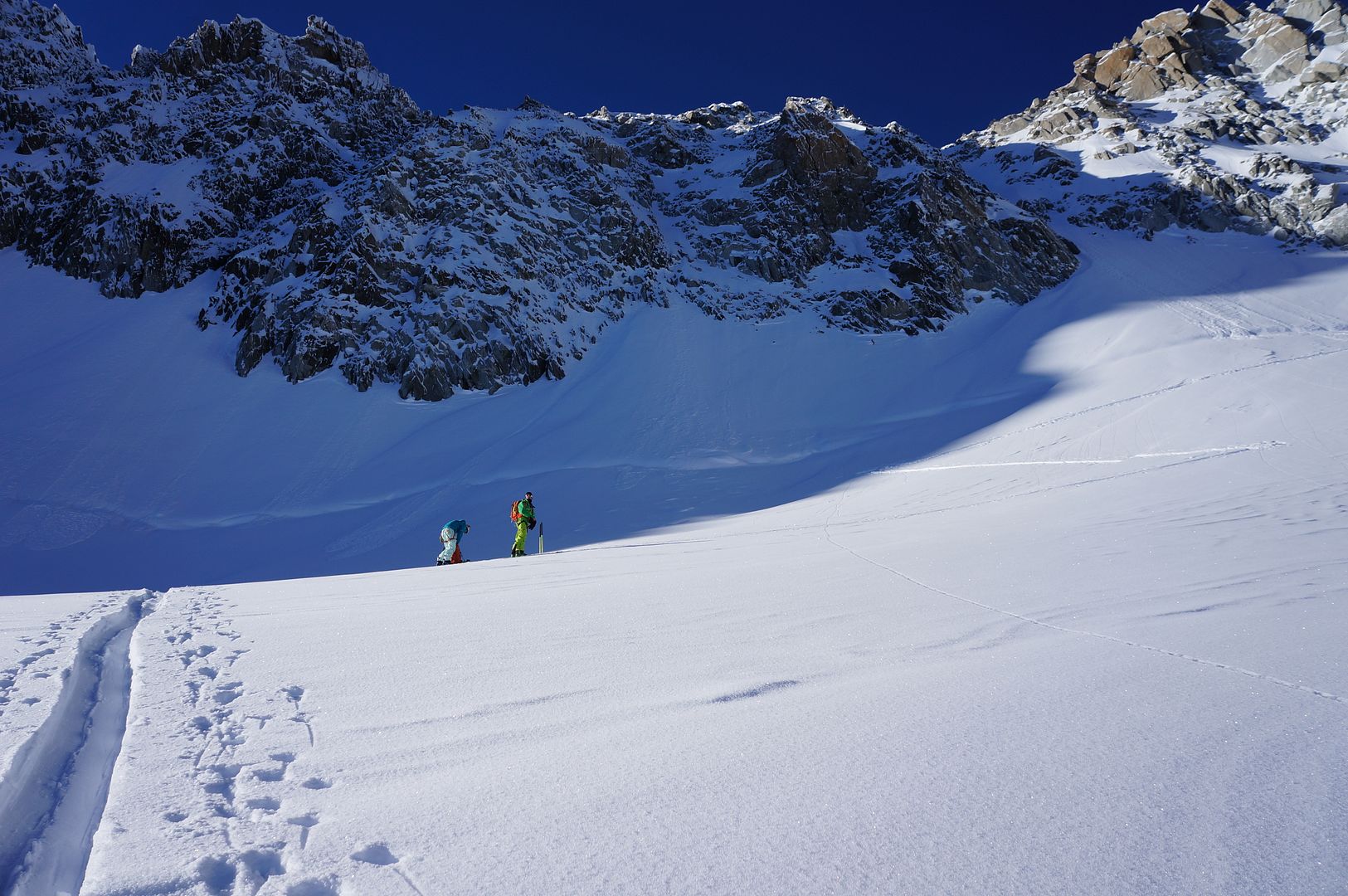
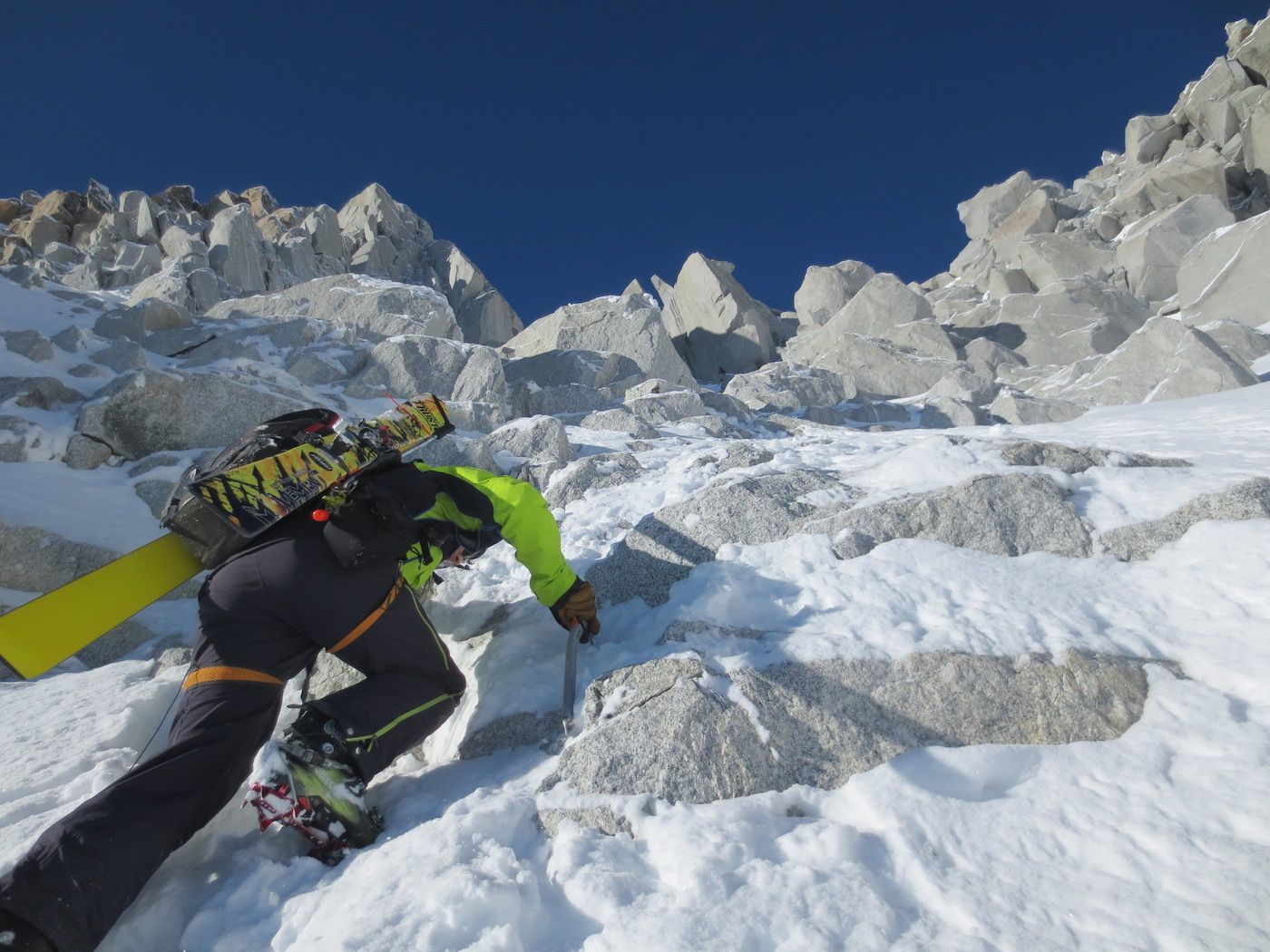
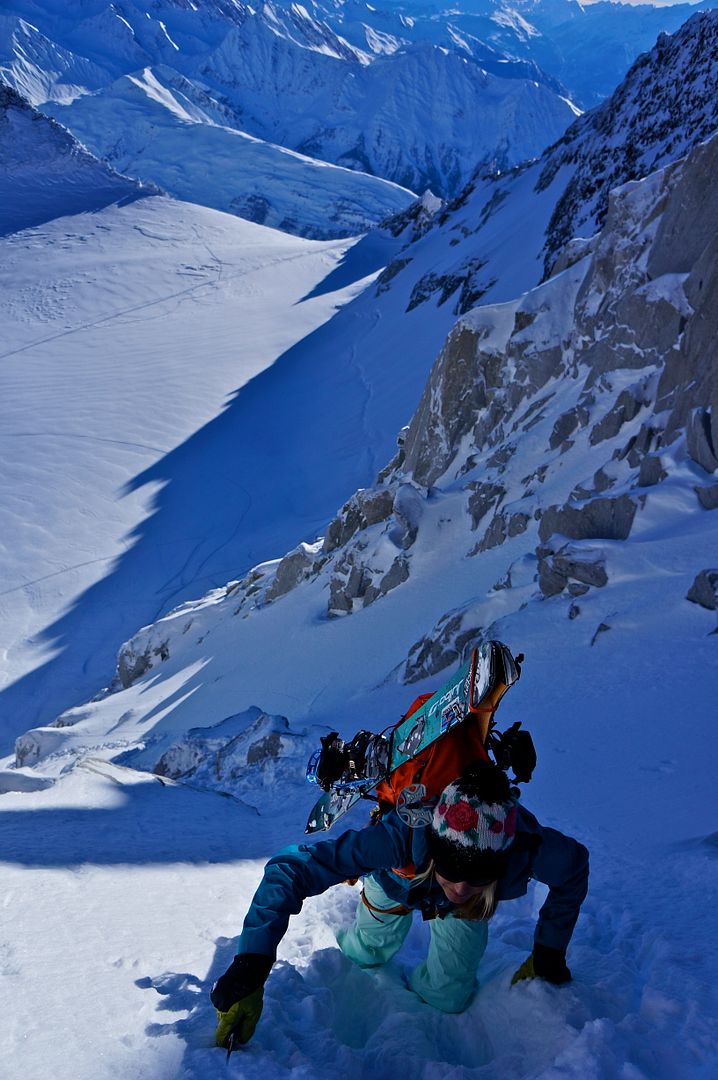
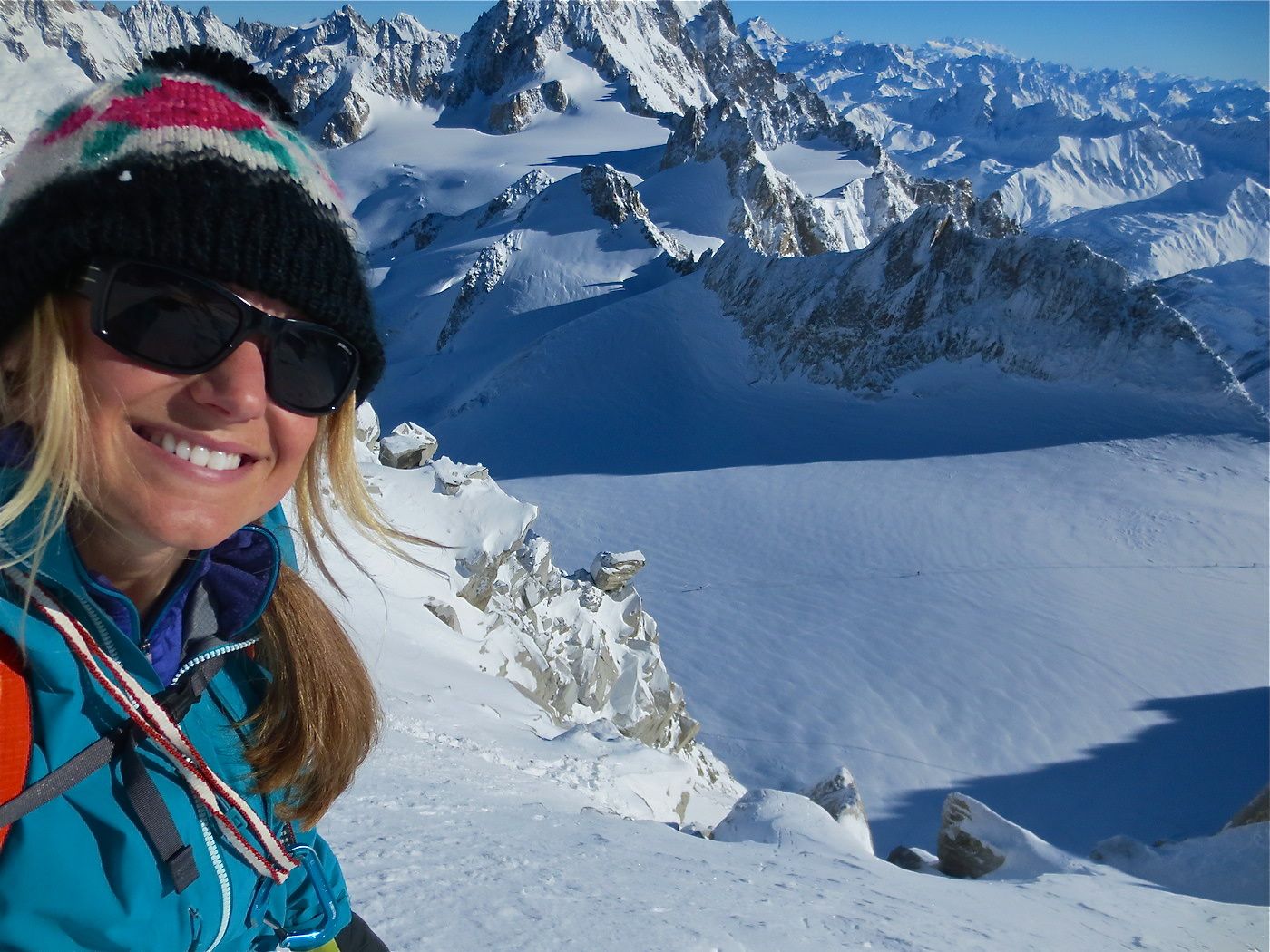
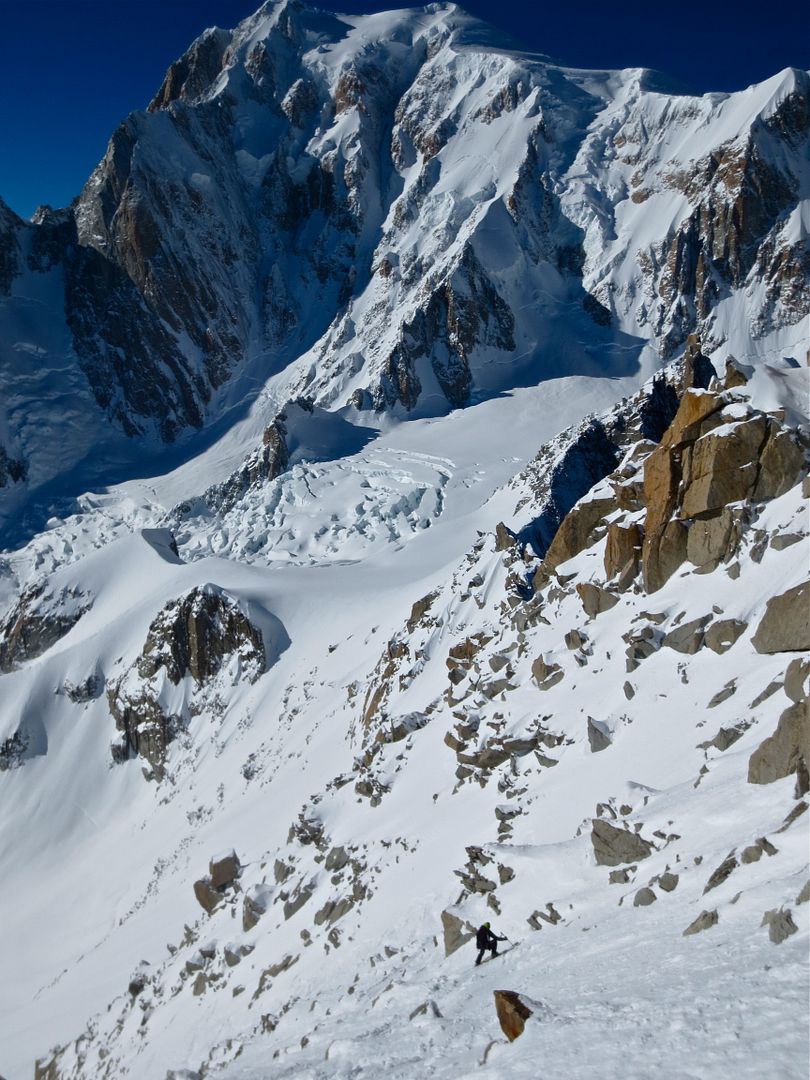
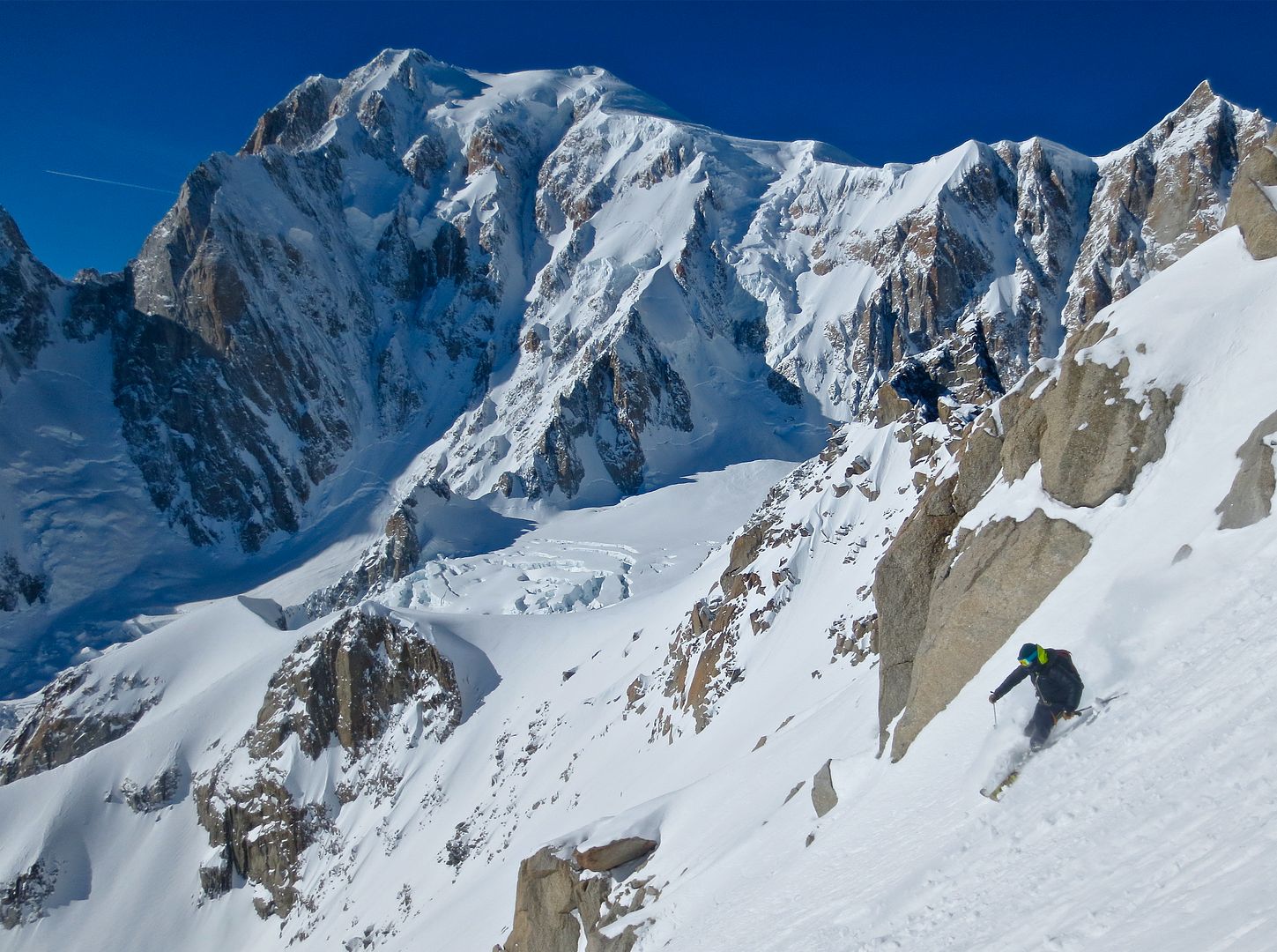
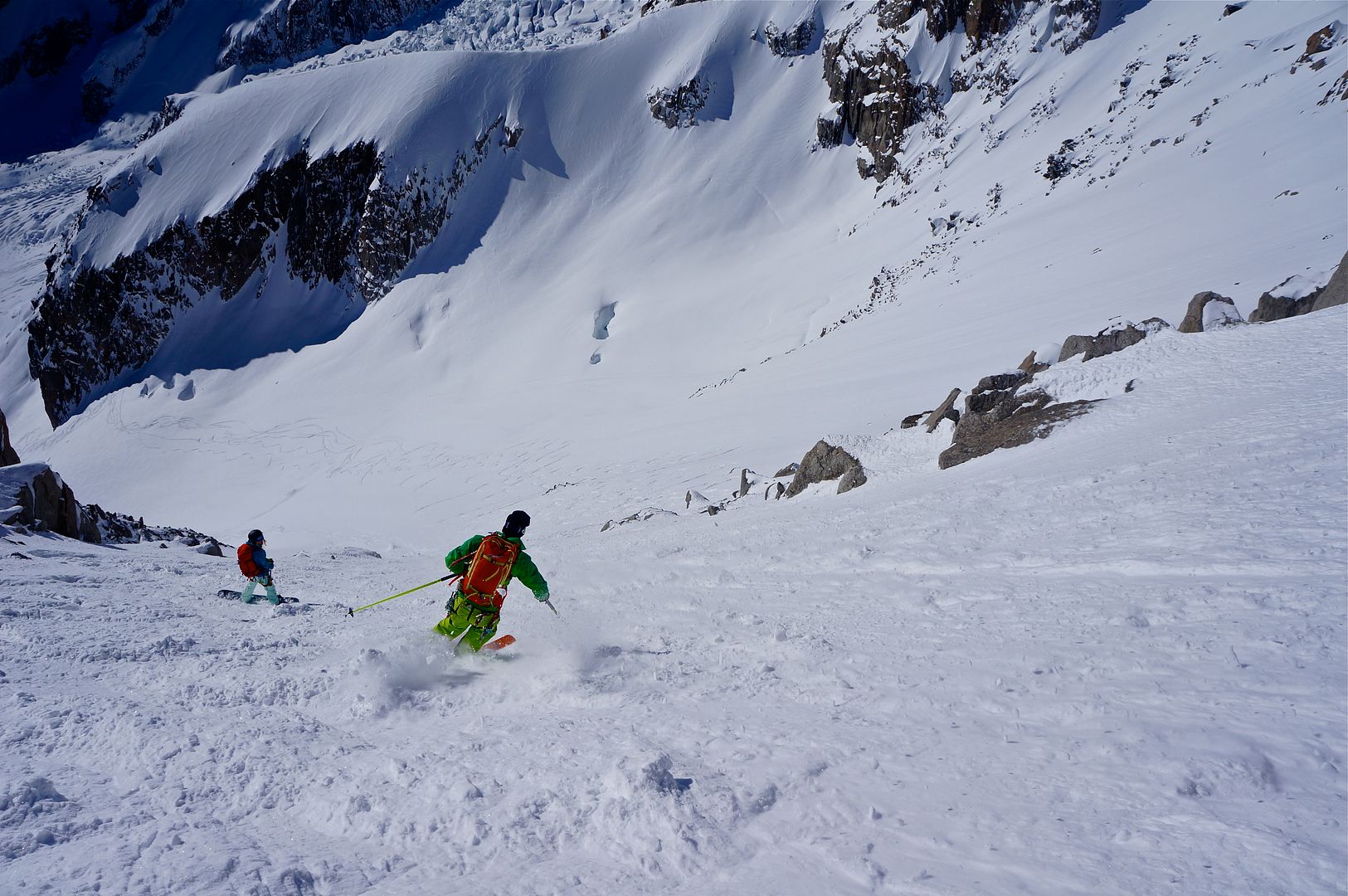
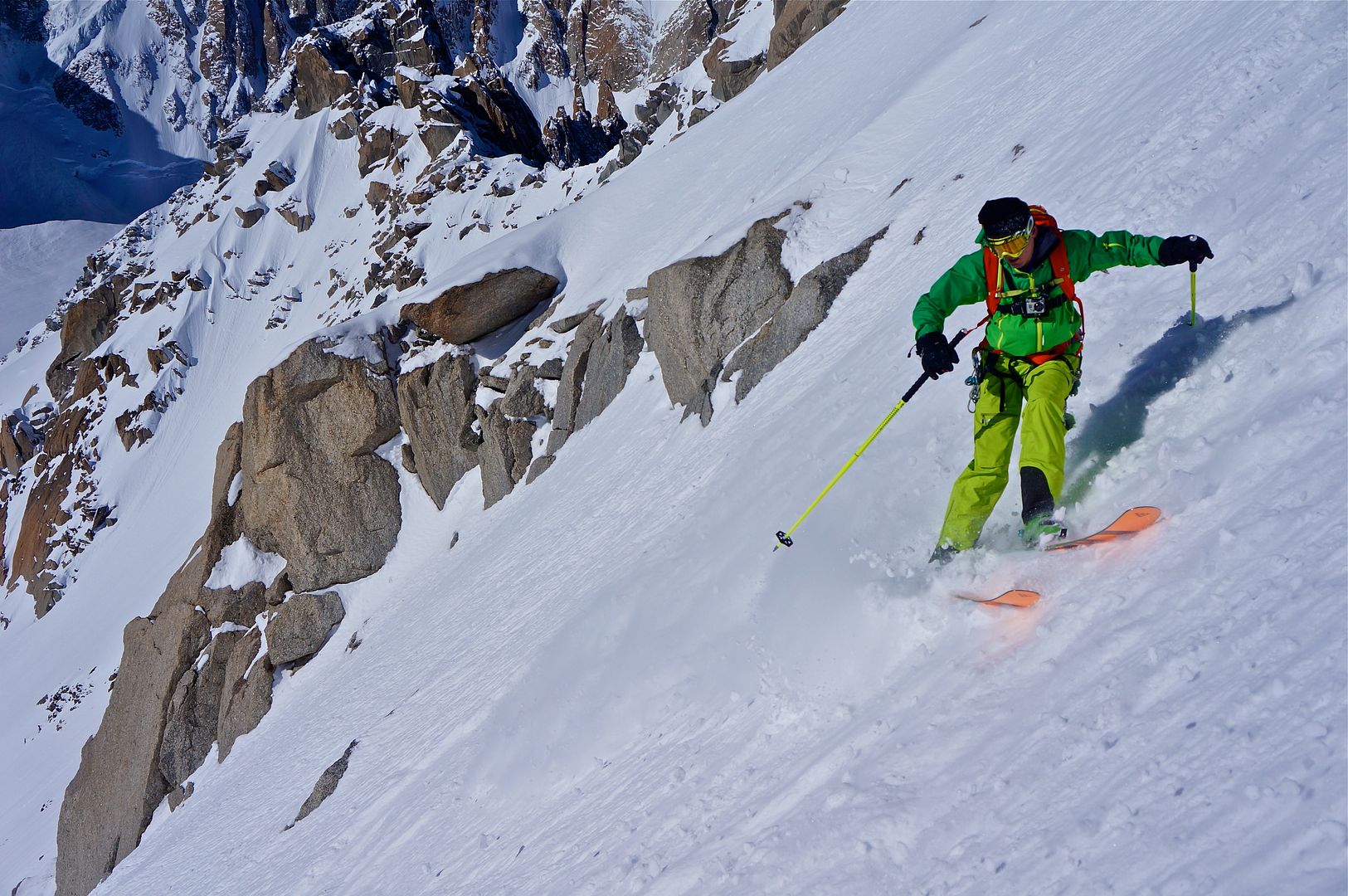
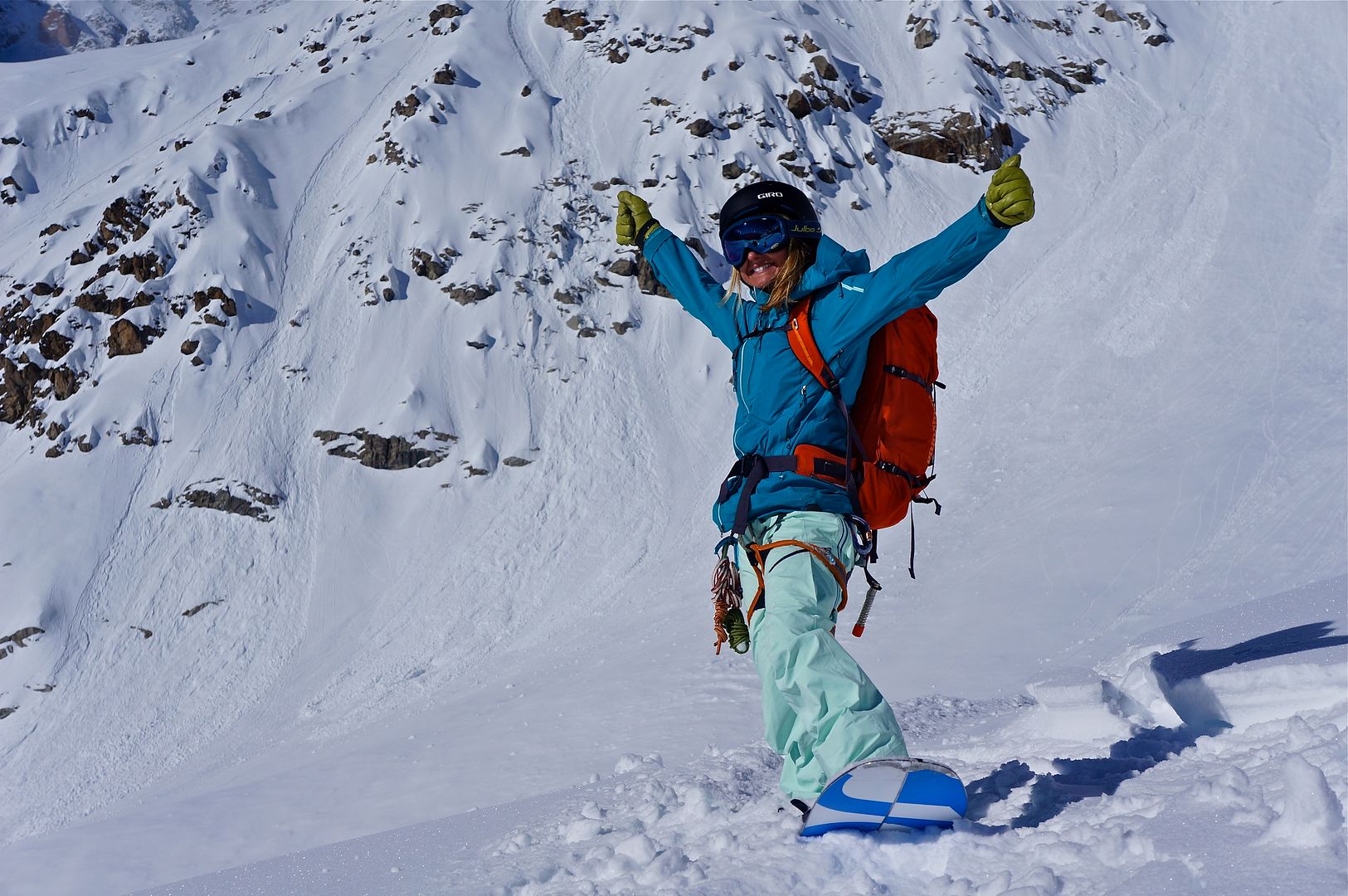
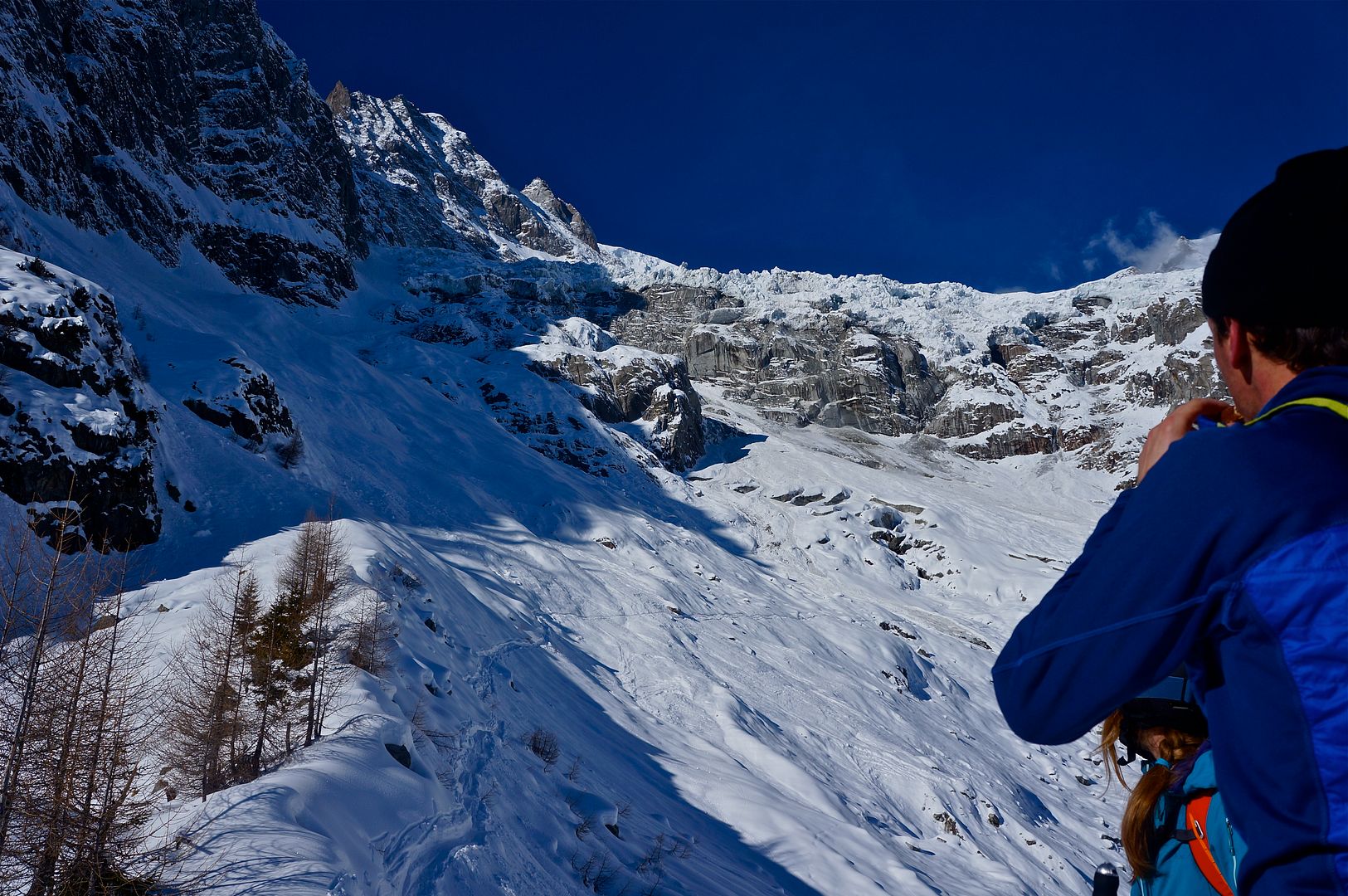
.jpg)

































